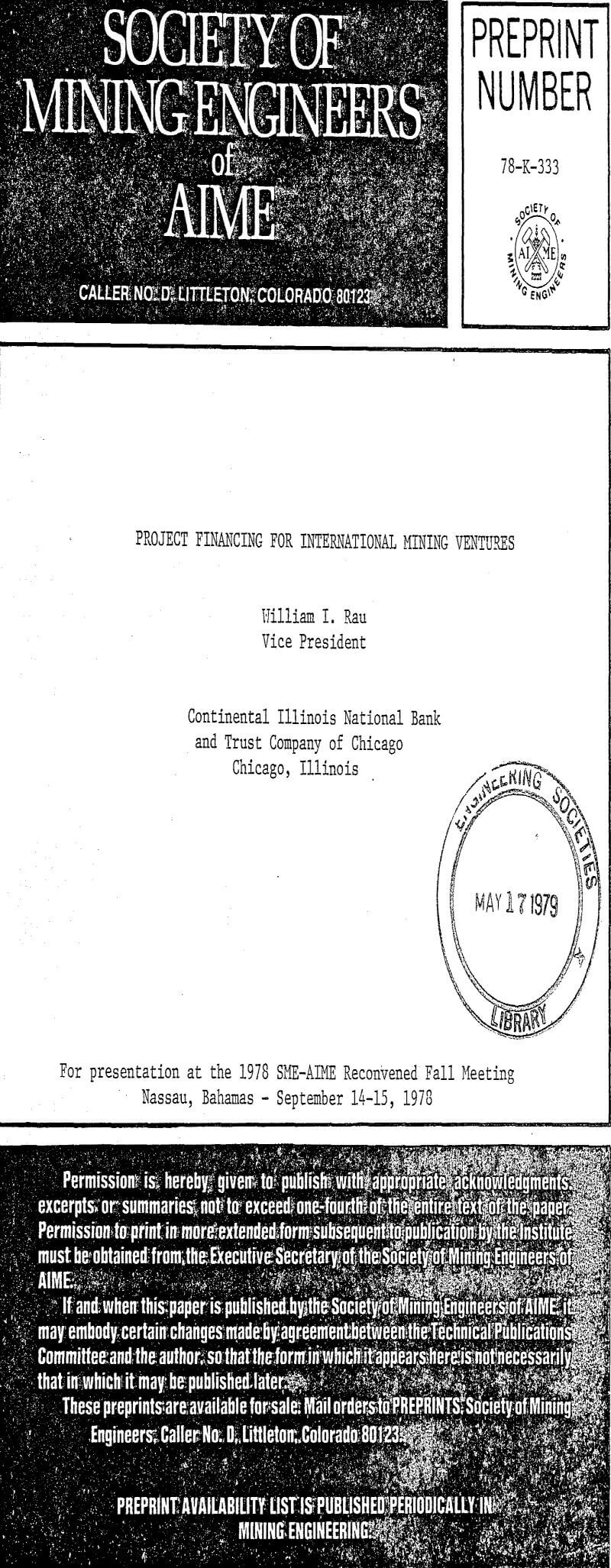Table of Contents
In the recent past, there have been numerous projections of the capital requirements for additional mine and processing capacities required to meet projected non-Communist World demand for minerals during the next 15 years. A consensus judgment would place this currently at $14 billion per year, with the largest expenditures required for increases in aluminum and copper production.
Definition of Project Financing
The term “project financing” describes the various means that lenders use to finance a new project on a basis where repayment is expected only from the cash flow generated by the project. Project financing is always tied to the economic outcome of a project and often is not guaranteed to any appreciable extent by the developer(s). Project financing must be made pursuant to terms which maximize the opportunity for economic success of the project, i.e maximizing the amount and timing of the cash flow which are projectable with engineering and financial analysis.
Advantages of Project Financing
- Loan disbursement and repayment periods are always customized to the engineering projections of the project. These periods are normally more extended than those in conventional financing. Disbursement periods can range from one to four years to correspond to the development schedule.
- Very often, mining projects are undertaken on a joint venture basis where a new entity is formed to develop the deposit and to obtain the financing. Without a proven “track record” and/or without iron-clad guarantees from the project partners, the new entity would certainly not qualify for conventional financing.
- Many mining companies have limitations placed on their borrowing capacity in already existing indenture agreements. Particularly in cases where a joint venture may be formed, project financing for the venture could possibly be arranged which would otherwise have been prohibited as a direct borrowing.
- It is often possible for project financing for a joint venture to be arranged on an off-balance sheet basis where the project loan does not appear on the balance sheet of the project partners. .
Support For Project Financing
In the absence of iron-clad guarantees by financially-responsible shareholders which would be the ultimate in security for a project financing, other forms of support are normally required. The extent of required support is dependent on the lender’s perceived level of:
Completion Risk – timely completion of mine construction within the capital expenditure budget.
Reserve Risk – sufficiency of the quality and quantity of .mineral reserves necessary to produce the projected tonnage of minerals over the life of the project.
Production Risk – ability to produce the projected tonnage of minerals annually, while maintaining projected levels of operating profit.
Marketing Risk – ability to sell output at prices that will maintain profit margins. If sold under long-term sales contracts, the strength and geographical diversity of purchasers, while contracts contain appropriate force majeure provisions.
Production Payment Financing
A typical production payment financing provides for the sale of a stated amount of future production from existing mines, new mines or some combination, to an arms-length third party, known as the “middleman” or buyer. The middleman pays for this advance sale with the proceeds of a bank loan, usually in a series of installments as the mine owner, the seller, needs funds for development. Repayment, including interest, is from stated percentages of future mine income. The bank is secured by a mortgage on the production payment and an assignment of the pledged income from production, which, in turn, is backed up by strong commitments of the mining company to develop and continuously operate the mine(s), usually pursuant to the terms of negotiated sales contracts. The production payment is self- extinguishing when the loan is fully repaid.

